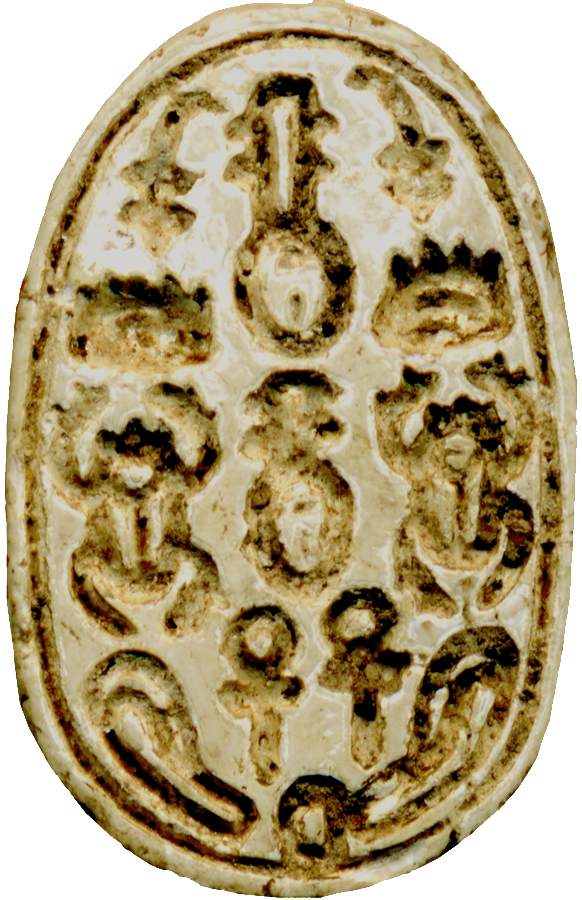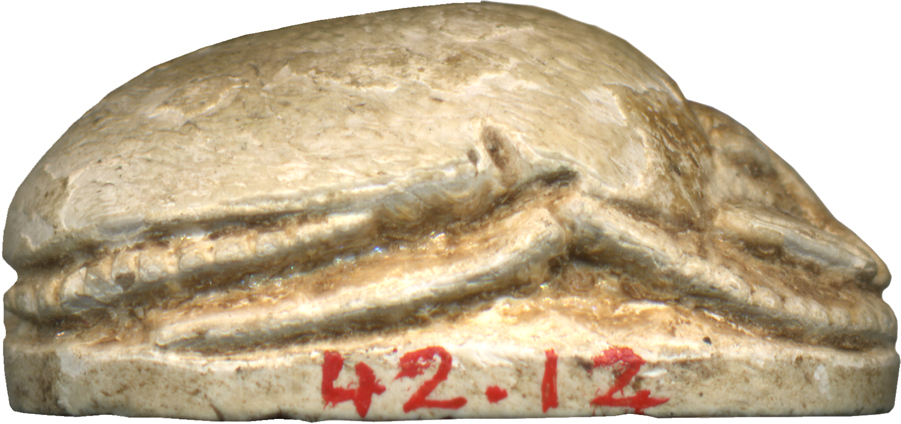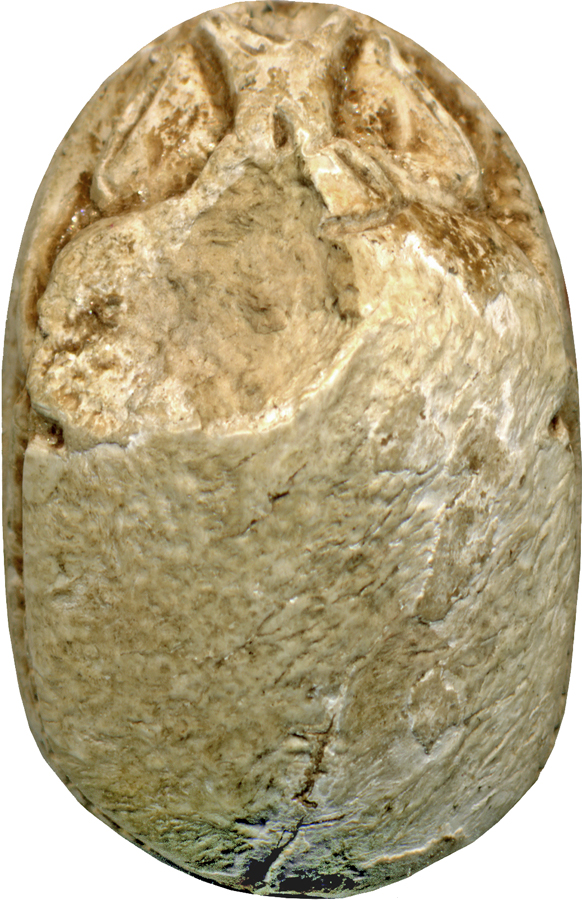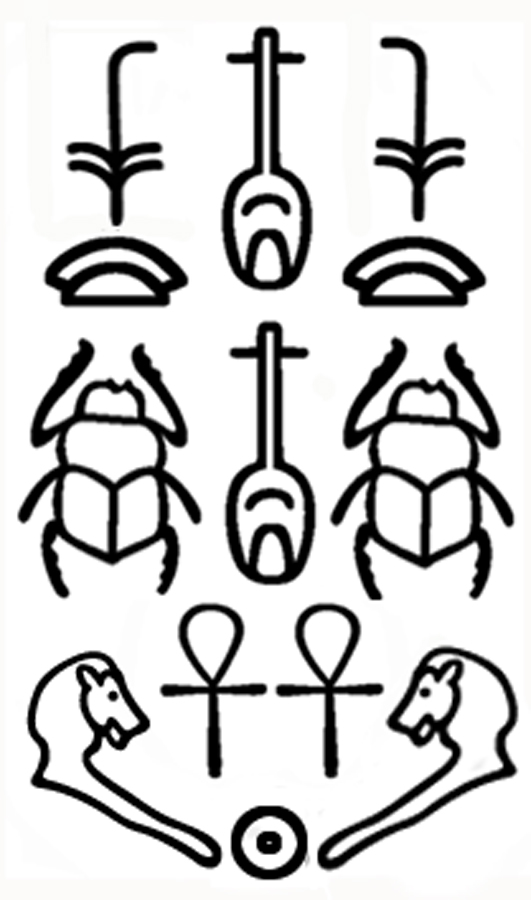Scarab with Script Signs
(Ancient Egypt and Nubia )
This steatite scarab was originally glazed. It has a flat underside with a vertically arranged bottom design with a combination of seven different script signs, six of which appear twice. The design of the scarab's back is simple with short aligned side-notches and well balanced proportions. The piece is simply made and the workmanship is good.
This multifunctional amulet should provide royal and divine support, good luck, life, renewal, and protection. The double presence of the six signs refers to the creation, and the single sun disc to the creator. The amulet should protect and support its owner in all different situations. The piece was originally mounted or threaded.
Scarabs displaying hieroglyphic sign arrangements without syntactical context are typical for the late Middle Kingdom and the Hyksos Period.
Inscription
Provenance
Provenance (from the French provenir, 'to come from/forth') is the chronology of the ownership, custody, or location of a historical object. Learn more about provenance at the Walters.
Henry Walters, Baltimore, 1911 (?) [mode of acquisition unknown]; Walters Art Museum, 1931, by bequest.
Geographies
Egypt
(Place of Origin)
Palestine (Place of Origin)
Measurements
H: 5/16 x W: 7/16 x L: 11/16 in. (0.8 x 1.1 x 1.7 cm)
Credit Line
Acquired by Henry Walters, 1911 (?)
Location in Museum
Not on view
Accession Number
In libraries, galleries, museums, and archives, an accession number is a unique identifier assigned to each object in the collection.
In libraries, galleries, museums, and archives, an accession number is a unique identifier assigned to each object in the collection.
42.12












